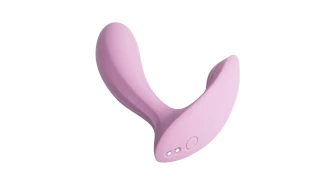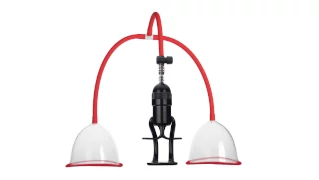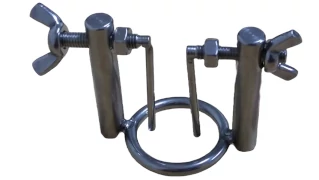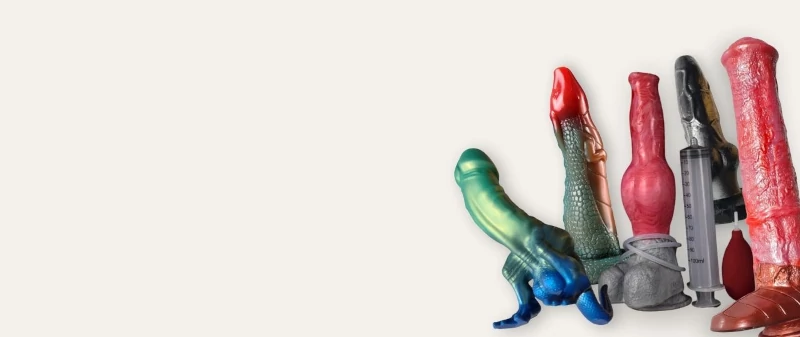Exciting toys Stone shop: Svatoslavova 554/1, Prague 4 - Nusle
Prices 40% lower than elsewhere
Tough testing and reviews
Extasica Design
Discretion
Sex Toy Testing
How do we test and measure sex toys in the sex shop before marketing?
Measuring the hardness of dildos and other erotic toys
Hardness of sex toys we measure with a C durometer on a scale 0-100HC. So we can talk about percentages of hardness. Hardness sex dolls is measured in accordance with the official methodology for the C durometer, which specifies a pressure of 44 N (4.4 kg). Hardness of dildos and vibrators we measure contrary to the C durometer methodology, so that the 2.5mm tip just goes into the rubber, so as not to measure the mutually compressed rubber. There is no point in measuring the hardness of hard pins made of medical grade silicone - always above 60HC, i.e. essentially completely hard for the body (only slightly flexible, not elastic). It's different for soft liquid silicone.
The values of tyres up to 10HC according to the methodology would therefore be about 60% harder, up to 20HC about 40% harder, from 40HC the deviation is small. We measure the hardness on the glans or on the tip of the penis or toy, where the hardness is usually highest and where the data is most important for the customer, because the tip presses most on the tissue. Properly, a Type A durometer should be used for soft rubbers, but its measurements show very low values with little resolution. For example, where a C durometer shows 1 or 10HC, an A durometer shows 1HC. Where the C durometer shows 35-40HC, the A durometer shows about half that. For values above a hardness of 50HC, the differences become less pronounced. This leaves us with the C durometer for hard rubbers, which has a higher resolution and shows more intuitively appropriate values.
Human Tissue Response and In-Service Testing
We test the way of use and functionality, e.g. whether the harness really immobilizes or stretches, simply fulfills its purpose.
Dildos are tested for the degree of pull on the skin during friction. Porous PVC dildos pull quite a bit. Non-porous silicone virtually none at all. Exceptionally, some dildos (even those offered by reputable stores or distributors) burn the mucous membrane when it is injured and are not allowed to be sold. Further, resistance to prohibited gels for the material and to the rather extreme environment in the rectum. In practice, most devices except condoms can be used with banned gels without damage. Some dildos are easily deformed to a slightly smooth or stool stained surface - especially PVC and TPE dildos when using a fat/oil based gel (deer tallow).
The rectal mucosa is also very sensitive to grinding/rounding and is usually used to confirm the tactile test.
For gels, dryness, effects on the mucous membrane, condom and toys are tested.
Authenticity testing of hides and skins by microscope and other methods
more in the article How to recognise genuine leather
Visual and tactile control
Test for surface cleanliness, casting, rounded edges, especially of metal objects - whether they will not cut the mucous membrane, e.g. of metals. Safety of bonding tools so that they do not cut like PVC nylon bonds or tear tissue like commonly supplied carabiners.
Strength tests
It refers to handcuffs, chains, vaginal mirrors, erection rings. They must be able to withstand an adequate degree of strain. A mirror, for example, should not normally be able to be bent by the contraction of the vagina or anal sphincters.
Odour trail
Only with human senses. Products with a significant trace of plastic, perfume or other odours are not allowed for sale.
Dimensions, weight, noise level
dimensions: meter, sliding scale (for dildos the first indication is the length, sometimes followed by the insertable length in brackets. the last indication is the diameter)
weight: digital scale - net including driver without batteries and charging accessories
The sound of vibrators - about 5 cm from the microphone of a higher-end android phone in the app. Measurements at this distance correspond to the manufacturers of various products, although sometimes the values are measured a meter or even 10m from the device (e.g. for commercial refrigeration compressors). Quieter vibrators have 50-60 db, the standard is around 70 db.
Further information
Lab tests are not within our power. For the introduction of aids we concentrate on CE certified products where the presence of harmful substances should be excluded. For SM harnesses/garments, we do not plan to test for the presence of nickel or its release rate in the near future, as these are not products intended for long-term wear within the meaning of the concerned REACH Regulation 1907/2006 EC.











